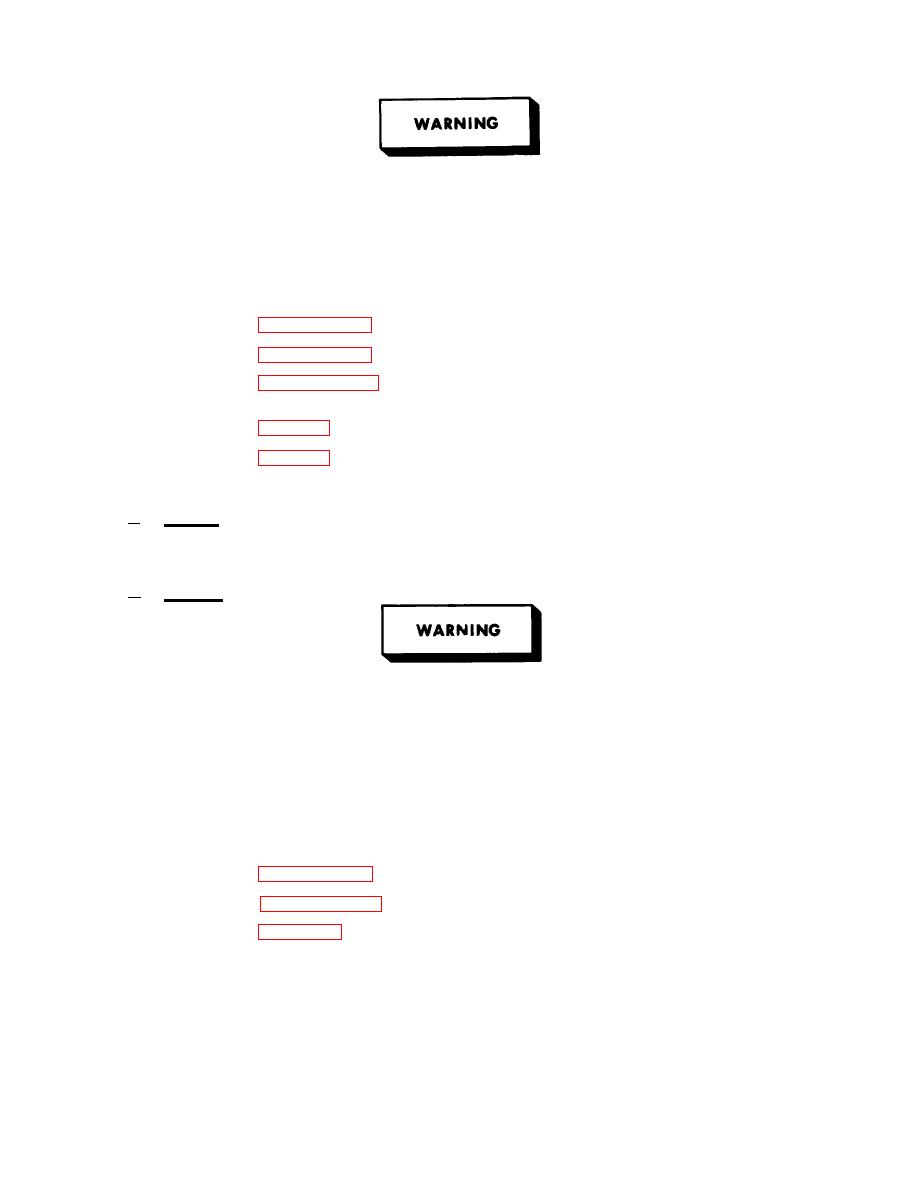 |
|||
|
|
|||
|
Page Title:
LIQUID LINE AND PRESSURE EQUALIZING SOLENOID VALVES (L1) , (L2). |
|
||
| ||||||||||
|
|
 TM 5-4120-369-14
Brazing operations should be carried out using approved
eye protection equipment and rods not containing cadmium.
Certain brazing operations may require mechanical venti-
lation.
Local preventive medicine personnel should be queried
if doubt exists as to rod composition or ventilation
requirements.
(2) Refer to paragraph 5-6 and solder receiver to refrigerant system tubing.
(3) Refer to paragraph 6-3 and leak test the refrigeration system.
(4) Refer to paragraph 4-18 and install rear top cover.
(5) Refer to para 6-3 and purge the refrigeration system.
(6) Refer to para 6-3 and charge refrigeration system.
LIQUID LINE AND PRESSURE EQUALIZING SOLENOID VALVES (L1) , (L2).
General. The solenoid valves are electrically-operated valves, which close when
a.
electrical power is applied to the solenoid coils. Both are alike, only the usage is different.
L1 is open in cooling mode. When the air in the conditioned space has lowered to the
Temperature Control Switch (S3) setting, (By-pass mode) the valves reverse.
Removal.
b.
Caution should be exercised with flourocarbon refrigerant
gas (freon) as they can displace oxygen and thereby
cause suffocation.
Personnel with a history or other evidence of cardiac
rhythm abnormalities should be made aware of the
potential for aggravation existing cardiac rhythm abnor-
malities or the induction of arrhythmias, as a result of
exposure to flourocarbon refrigerant gases. Such
individuals should be evaluated by local medical authorities
before working in environments where potential refrigerant
exposure may occur.
(1) Refer to paragraph 6-3 and discharge the refrigerant system.
(2) Refer to paragraph 4-18 and remove top covers.
(3) Refer to figure 5-5 and remove solenoid cover and coil.
(4) Remove two solenoid valve mounting screws.
(5) Unsolder solenoid valve from tubing.
|
|
Privacy Statement - Press Release - Copyright Information. - Contact Us |